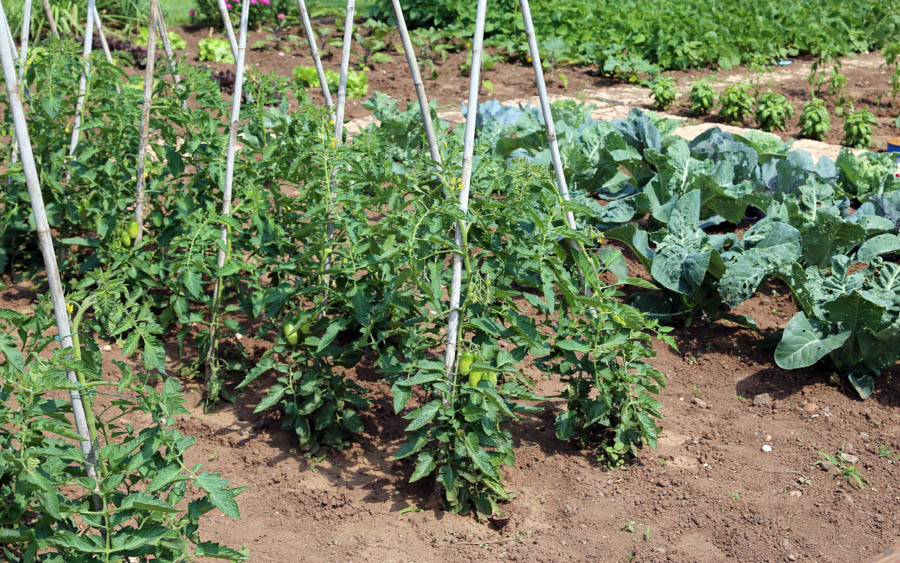Tomatoes and Companion Planting: Traditional Pairings and Other Suggestions

GardenZeus receives commissions for purchases made through links in this post. These commissions are earned without additional cost to you.
GardenZeus expert Darren Butler has found tomatoes generally to be unfussy companions for many other garden vegetables. Most varieties don’t need insects for pollination, so planting fragrant herbs and flowers to attract pollinators is less important for tomatoes than for other garden vegetables, such as cucurbits.
It is important to consider where tomatoes will be placed in your garden more based on size and habit of the tomato variety, to ensure that individual tomato plants receive plenty of sunlight, and both for beneficial shading of other plants during hot summers and to avoid shading other plants that need full sun. In small gardens, indeterminate tomatoes are often planted in the back (in the farthest areas from the direction of sunlight) and trained upward for efficient use of space.
Avoid planting tomatoes with or near other Solanums, such as potatoes and eggplants; with other members of the nightshade family, such as peppers; or in soil where tomatoes or relatives have been grown during the past 2 to 3 years.
Traditional companion plants for tomatoes include basil, borage, carrots, chives, marigolds, nasturtiums, and onions.
Take into consideration the vigor of your tomato varieties when considering companion plants: the vigor of your variety and its ability to thrive in your soil and growing conditions ultimately determine appropriate spacing between tomatoes and their companions. Allocate large growing areas for vigorous indeterminate tomato varieties, particularly indeterminate hybrid plants.
To view customized information for growing tomato in your area, go to GardenZeus and enter your zip code, then go to tomato.
Other related articles include:
GardenZeus Tips for Fertilizing Tomatoes During the Growing Season
The GardenZeus Guide to Staking, Supporting and Trellising Tomato Plants
GardenZeus Solutions to Common Abiotic Problems With Garden Tomatoes